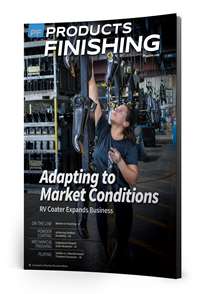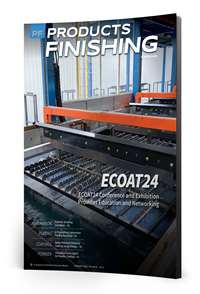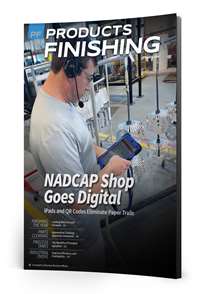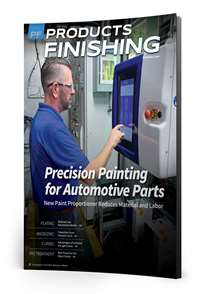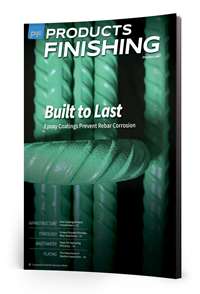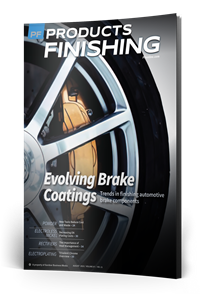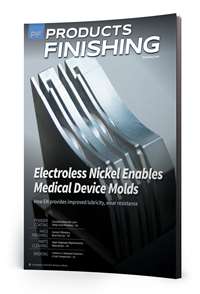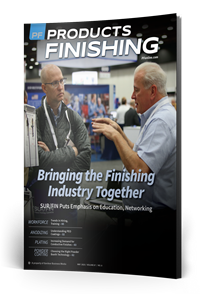FEATURES
Fabricators & Manufacturers Association president Gerald Shankel discusses the imperative to recruit young people with higher skills into the manufacturing workforce.
In this paper specimens of brass (65% Cu - 35% Zn) were nickel electroplated in a Watts type bath with or without the addition of a suitable concentration of cationic dye Nile Blue. Electrochemical methods, SEM/EDS and XRF techniques were used in this study in order to evaluate the effect of this dye on the nickel electroplating process. The dye shifts the potential of nickel deposition to more negative values, decreases the current density under potentiostatic conditions, resulting in a lower rate of formation of nickel deposits, improves the macro- and micro-throwing power, as well as the cathodic current efficiency of the bath, increases the brightness of the nickel deposits and reduces the grain size.
In a typical acid copper plating bath, additives, such as grain refiners, brighteners and carriers, are used to deliver a smooth, bright and hard deposit. In order to ensure high quality plating, it is helpful to have a better understanding of the behavior of these additives in the bath. In this paper, a high performance liquid chromatography (HPLC) study of these additives is discussed, in an attempt to answer the following questions: Do these additives exist in the solution as a complex mixture of derivatives? Are there interactions between them? Are there any decomposition species accumulated in the plating process? How can we better control the plating process? The results indicate that the brightener exists in the bath with a series of its derivatives, while the grain refiner is in a simple form. When the brightener and the grain refiner were mixed in solution, some new species, which have different retention times in HPLC, were generated. Combined with a Hull Cell study, the impacts of the new species and the concentrations of additives on the plating process were investigated. Decomposition of the plating solution was also examined.
As part of the Dodd-Frank Wall Street Reform and Consumer Protection Act (Financial Reform Act) that was signed into law on July 21, 2010, companies that use conflict minerals must submit a disclosure report to the U.
The chemical polishing of artificial heart valve rings and the factors influencing surface quality were investigated in this work. The optimum parameters for polishing flat specimens were determined from a fractional factorial design and a few single-factor experiments. The results indicated that a good bright surface was obtained on the valve ring through chemical polishing in the optimum solution, and the pivot orifice surface roughness (Ra) of approximately 0.2 μm could be achieved. This result also provides a simple method to obtain a smooth surface on biomedical titanium.
Voluntary Protection Programs (VPP) in particular have attracted a diversified group of employers, from small mom-and-pop operations to large industrial sites. This article outlines the benefits of the VPP program and discusses specific safety concepts needed to start/develop a successful program.
Frank Altmayer offers this quick primer on the aluminum materials commonly found in aerospace manufacturing.
Jack Dini comments on the continuing reduction in chronic ailments.
Oily soils on parts can at times provide a real challenge. These suggested evaluation steps will help identify the real problem and the solution to your cleaning problem.

